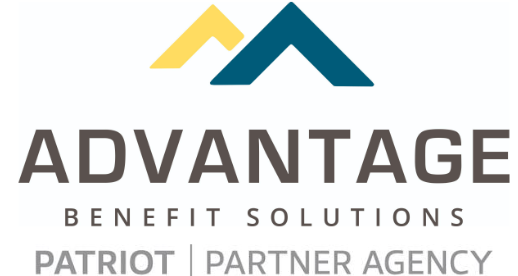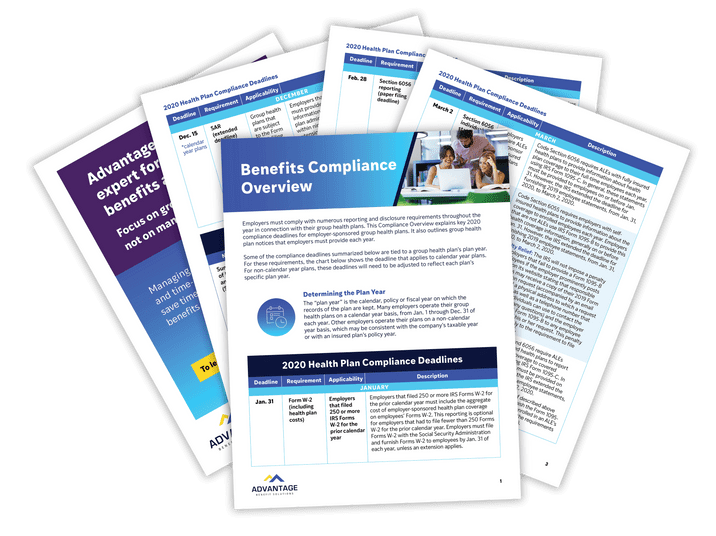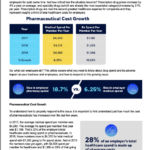How Rising Pharmaceutical Costs Are Impacting Employers and Their Employees
Pharmaceutical costs have been a significant contributor to rising healthcare costs for both individuals and employers for quite some time, but how critical has the situation become? Prescription drug prices increase by 4% a year on average, and specialty drugs (which are already the most expensive category) increase by 21% per year. Prescription drugs are now the second greatest healthcare expense for companies and they represent roughly a third of total healthcare costs for employers.
So, what can employers do? This article covers what you need to know about drug spend and its adverse impact on your business and employees, and how to respond to this growing issue.
Pharmaceutical Cost Growth
To understand how to properly respond to this issue, it is important to first understand just how much the cost of pharmaceuticals has increased over the last few years.
In 2017, the average medical spend per member was $4,240. The average Rx spend per member that year was $1,168. That’s 22% of the employer’s total healthcare costs being spent on pharmaceuticals. In 2018, those numbers rose to $4,315 for total medical spend with $1,265 going to Rx spend alone. And in 2019 the numbers rose yet again, with $4,505 spent per member for healthcare and $1,386 or 28% of that going to pharmaceuticals.
From 2017 to 2019, pharmacy costs rose from 22% to 28% of total healthcare dollars. And while the rise in total employer medical spend was 6.25%, pharmacy spend saw a staggering 18.7% increase from 2017 to 2019.
Total Drug Spend
In addition to rising costs, medical Rx drug purchases are often buried within an employer’s medical pharmacy spend and are generally not within the purview of their Pharmacy Benefit Manager. From July 2019 through June 2020, medical spend accounted for 70% of total drug spend, Rx spend accounted for 26%, and Medical Rx spend accounted for only 4%.
Many employers may be missing key opportunities to reduce the amount spent on Rx because they are not adequately controlling the pharmacy spend under medical.
Wasteful Spending
While rising costs and poor allocation of drug spend might be large contributors to the skyrocketing of pharmaceutical expenses for employers, another very big concern is wasteful spending. In fact, for every $1million spent on pharmacy costs, an average of 3% is spent on higher-cost drugs that have no additional clinical value over lower-cost alternatives.
Examples include the Humalog KWIK injection for insulin treatment, which costs $1,000 – 42% higher in cost than the Novolog Flexpen at only $580, and Duexis for analgesics (pain relief) costing $450 for a 30 day supply – 9x higher than Ibuprofen + Famotidine at only $51.
Specialty Drugs
Another concerning statistic contributing to the issue of pharmaceutical costs and is the growth of specialty drug costs. Specialty pharmacy medications make up 19% of all Rx dollars spent. In fact, for every $2.28 spent on specialty drugs billed under the pharmacy program, only $1 is spent under medical. From 2018 to 2019, Brand Rx increased in cost by 13.6%, Medical Pharma by 7%, and Specialty Rx grew in cost by an astonishing 39%.
What are drug rebates?
Many businesses choose to partner with organizations known as pharmacy benefit managers or PBM to help negotiate with pharmacy manufacturers in the hope that they’ll receive rebates and discounts on prescriptions based on things such as volume and market share. Similar to this, some employers are now joining together to create prescription purchasing pools in order to increase their purchasing power and negotiate lower prices. Drug rebates play an important role in the current US pharmaceutical marketplace. For example, among classes of medications with various competing therapies, such as insulins, negotiated rebates can lower the list price of a medicine by up to 70%
What Employers Can Do
So, the problem exists and continues to grow, but what can employers do to address these issues? Here are the key things you can do to reduce your prescription drug spend:
- Prioritize employee education around your benefits offerings
- Inform your employees of best practices and coverage specifics
- Empower your employees to save themselves time and money with tools like Clever RX, Healthiest You, and lifestyle benefits
- Encourage your employees to follow best practices with new insurance tiers and drug formularies
- Use restrictions as a last resort, because while they can be effective you risk alienating employees
- Partner with PBMs to reduce costs, but consistently manage your PBM relationship to maximize the benefit to your employees and your bottom line
- Work with an employee benefits broker that helps you build and implement a strategy to control prescription drug costs
In an age of rising drug prices, and higher co-pays and deductibles, many employers are cutting coverage to manage their costs. But the reality is that you can effectively reduce costs while helping your employees receive the highest level of healthcare with the support of an excellent benefits broker.
Take Charge of Your Drug Spend
Advantage Benefit Solutions specializes in helping employers take charge of their prescription drug spend. We have proactive programs that can help your business save hundreds of thousands of dollars a year in drug spend. Get in touch today to learn more about our cost reduction solutions.
Download Our Complete Report on Employer Drug Spend
Click here to download our complete Employer Drug Spend Report.







